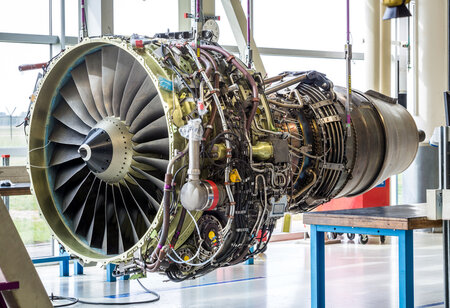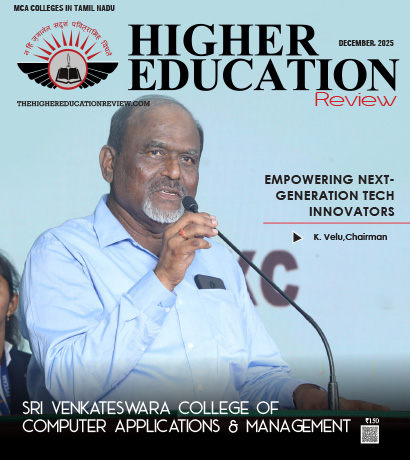Trends Reshaping Aeronautical Engineering Education
 With over 50 branches, engineering is one higher education stream that offers plethora of specialization options to the students. Out of these, aeronautical engineering which predominantly deals with study concerning the development of spacecraft and aircraft is one of the most unique engineering branches as it opens up new alleyways for lucrative job options, immense career development opportunities and the ability to work in both aeronautical and mechanical industries. India has more than 200 colleges offering BTech in aeronautical engineering and out of this, 90 percent are private players. Most of the aeronautical engineering programs cost between two to three lakhs but one can also find courses starting below one lakh as well. The rising accessibility of top-notch aeronautical engineering programs has increased the popularity of aeronautical studies in India as shown by the fact that every year nearly 8,000 to 10,000 aeronautical engineers pass out from engineering colleges. This number is also seeing a 4 to 6 percent increase ever year. Being one of the frontier streams in engineering education, aeronautical engineering evolves at a rapid pace. So, let’s analyze some of the most notable changes that are shaping the aeronautical engineering space.
With over 50 branches, engineering is one higher education stream that offers plethora of specialization options to the students. Out of these, aeronautical engineering which predominantly deals with study concerning the development of spacecraft and aircraft is one of the most unique engineering branches as it opens up new alleyways for lucrative job options, immense career development opportunities and the ability to work in both aeronautical and mechanical industries. India has more than 200 colleges offering BTech in aeronautical engineering and out of this, 90 percent are private players. Most of the aeronautical engineering programs cost between two to three lakhs but one can also find courses starting below one lakh as well. The rising accessibility of top-notch aeronautical engineering programs has increased the popularity of aeronautical studies in India as shown by the fact that every year nearly 8,000 to 10,000 aeronautical engineers pass out from engineering colleges. This number is also seeing a 4 to 6 percent increase ever year. Being one of the frontier streams in engineering education, aeronautical engineering evolves at a rapid pace. So, let’s analyze some of the most notable changes that are shaping the aeronautical engineering space.
The Importance of being Multidisciplinary
Conventional engineering programs follow a process where the lecturer is the active agent delivering classes while the students become passive agents and thereby, the effectiveness of the teaching-learning process is significantly reduced. Following this traditional method leads to low motivation levels and little to no room for self-learning for students. This method of compartmentalized knowledge sharing doesn’t fit well with aeronautical engineering as students will be under-skilled to solve the problems that they will face in real-world scenarios. To equip students with the needed aeronautical engineering skills required to thrive in the modern world, multidisciplinary education which emphasis on practical training is important. By widening the scope of aeronautical engineering, students can not only acquire knowledge on more areas but they will also be able to expand their horizons even more.
Sathyabama Institute of Science and Technology is a great example which further highlights the importance of multidisciplinary education in aeronautical engineering. Under the ‘School of Mechanical’, Sathyabama Institute of Science and Technology runs four core departments including Department of Mechanical Engineering, Department of Mechatronics Engineering, Department of Aeronautical Engineering and Department of Automobile Engineering. By running these programs side by side, the institute is promoting and encouraging multidisciplinary education which benefits teachers and students from all these four individual streams. By sharing knowledge and expertise with each other, students at Sathyabama Institute of Science and Technology is able to acquire and hone their skills on a multitude of engineering arenas. This multidisciplinary education not only allows the students of the institute to be better prepared for the industry but it also allows them to be more versatile as well.
Sustainability and Research; the Need of the Hour
Like in most other industries, sustainability and its growing importance has had a major impact on the aeronautical industry as well. One of the most significant leaps taken towards sustainability in the aviation segment is the introduction of sustainable fuels which will reduce the Co2 emissions by up to 80 percent when compared to conventional fossil fuels. One of the other impressive facets of sustainable aviation fuels is the fact that, in order to use these fuels, there is no need to drastically change the fueling systems as well as the engines of the aircrafts. Some of the other key areas that is impacted by sustainability in the aeronautics industry is the increasing adoption of electrification for propelling the aircraft, the introduction of Transonic Truss-Braced Wing (TTBW) to reduce drag and by doing so, making aircrafts more fuel efficient, and the increasing use of high rate composites to name a few. And for all these developments, constant research has played an integral role.
The Department of Aeronautical Engineering at Dayananda Sagar College of Engineering strives to produce engineering graduates who acknowledges the importance of sustainability, and social responsibility while at the same time focusing on innovation and research skills. Through their training programs, the department aims to nurture the culture of sustainability in their students and to support the research activities of their students, Dayananda Sagar College has 20 research centers. The Department of Aeronautical Engineering alone publishes more than 6 research papers in reputed journals each year and some of the most innovate researches conducted by their students are: Energy Absorption Studies on Crashworthiness of the High Wing Aircraft Configuration, Aero Structural Design and Optimization of a Horizontal Axis Wind Turbine Rotor Blade, and Numerical Simulation and Shape Optimization of Blended Wing-Body configuration for a Commercial Transport Aircraft.
Soft skills and Aeronautical Engineering
With business organizations and teams within these organizations starting to be more integrated, communication channels have opened up. Now, communication and empathy have become crucial skills employers look for in candidates. And during interview processes, employers now look for more than the technical skills and academic prowess of the students. By measuring the soft skills of the candidates, employers are checking whether these individuals can blend with the existing team in the organization and can work well within the team. Some of the other key soft skills that employers look for are problem solving, leadership, flexibility, and self management.
The IARE Institute of Aeronautical Engineering is a prime example of an aeronautical engineering institution prioritizing on improving not only the technical competencies but also the soft skills of students. ANTHARIKSH Aero Club and Aeronautical Engineering Technical Association (AETA) are two prominent student bodies at the institute and the primary objective of these bodies are to conduct training programs aimed at the career development of students. Some of the other key focus areas of these student bodies are developing the interpersonal and intrapersonal skills of the students and by doing so, increasing their employability. To achieve this, they conduct various activities including guest lectures, quiz programs, career guidance classes, and industrial visits to name a few.
In order to ensure better efficiency, and cost-effectiveness, businesses are focusing more on flying technologies and as a result of this, there is an ever-increasing demand for skilled aeronautical engineers in India. The fact that aeronautical engineers get paid more than other engineers from most other engineering streams further accentuates this rise in demand. Being one of the bleeding-edge streams in engineering, professionals working in this space also gets the opportunity to get exposed to state of the art technologies constantly. And with more countries as well as private players taking impressive strides in the aviation domain, the future is looking bright for professionals working in this space.

